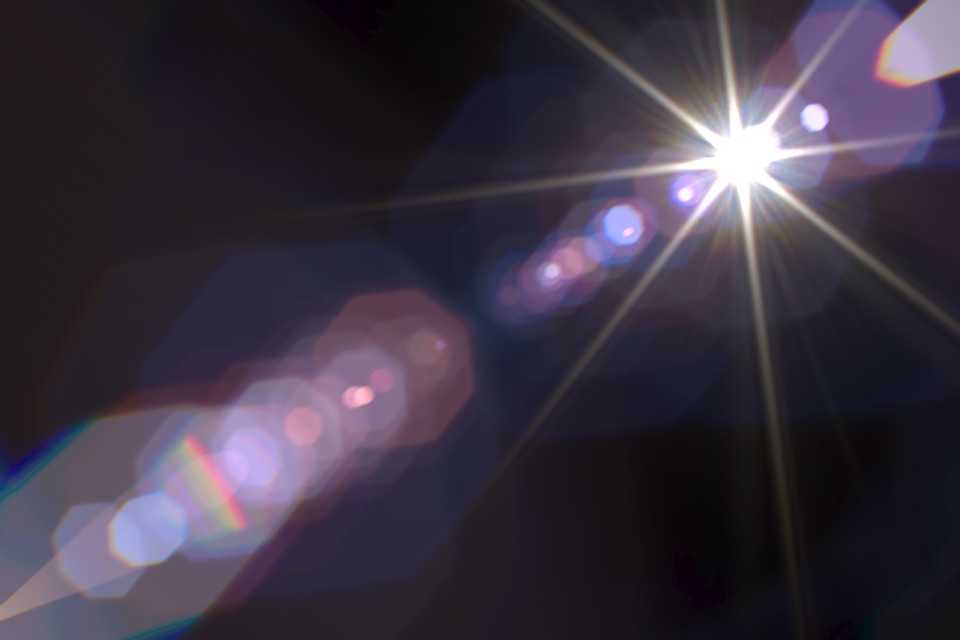Halos And Starbursts Around Lights And Vision Correction
Optics is often explained very simply (otherwise it would be even more difficult to understand). Light passes through a lens which focuses all the light exactly where it needs to go. But in life, optics aren’t as perfect as they are on paper.
This can lead to halos and starbursts.
Let’s take a look at what they are!
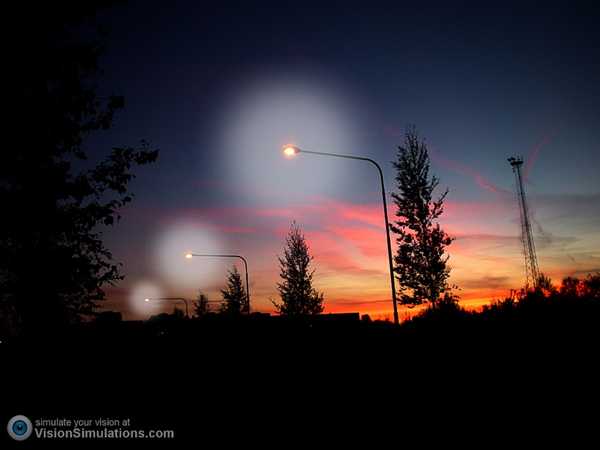
Halos; Image by http://visionsimulations.com
Halos are orbs of glow that surround lights. Halos are caused by light focused at different parts of the retina at the same time. Thus, the center part is in focus but the peripheral part is blurry.
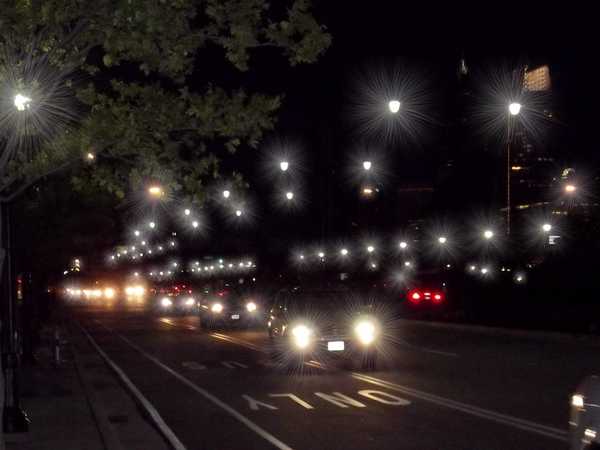
Starbursts; Image by http://visionsimulations.com
Starbursts are rays of light that extend outward from lights. Starbursts are caused by increased scattering of light.
Why Do Halos And Starbursts Occur?
Halos and Starbursts form from something known as a higher order aberration. Simply put, a higher order aberration is something that blurs the focus of light.
But what about nearsightedness, farsightedness and astigmatism? Don’t those also blur light and vision. Yes they do. However there is one more feature of higher order aberrations. Unlike nearsightedness and astigmatism, higher order aberrations can’t be corrected with glasses. Instead they just cause a degradation in vision. (fun fact: nearsightedness and astigmatism are actually called lower order aberrations)
There are three main higher order aberrations in vision: spherical aberration, coma, and trefoil
Spherical Aberration
Let’s start off with spherical aberration. The cool part about the naming of all theses aberrations is that the name gives hints to the pattern of blur. Spherical aberration happens when light from the periphery doesn’t focus at the same spot as light from the center of vision. The light that enters through the periphery becomes blurry.
Spherical Aberration creates the halo effect.
Coma
Moving on to coma. Coma happens when light is asymmetrically focused; either up and down are different or left and right is different. One side is sharp while one side becomes blurry. So what does it create? It creates a blur effect kinda like what a comet looks like! Hence the name “coma”. See, this stuff is easy!
Coma contributes to the starburst effect

Coma aberrations look like a comet; Featured image by SkiEngineer, CC BY-SA 4.0, via Wikimedia Commons
Trefoil
And finally trefoil. This one starts to get a bit more complex. It’s almost like it combines some aspects of spherical aberration and some of coma. Trefoil blurs light in 3 different directions.
Trefoil is the most common natural higher order aberration in our eyes. It contributes even more to starbursts
So there you have it! A brief rundown of important types of higher order aberrations that affect vision.
What Happens To These Halos And Starbursts?
Fortunately, the brain is pretty good at adjusting to these visual phenomena. Avoiding reinforcing the halos and starbursts is the best way to train the brain to forget about it. For most people, the large halos and starbursts fade away over time to become less and less noticeable. Eventually it becomes hard to see even when you are looking for it!
Who Has Higher Order Aberrations?
Everybody has some degree of higher order aberrations in their vision. Fortunately, in a normal eye they don’t cause issues and the brain adjust over time.
Abnormal eyes such as what happens with keratoconus can have a very significant amount which leads to a large amount of vision loss.
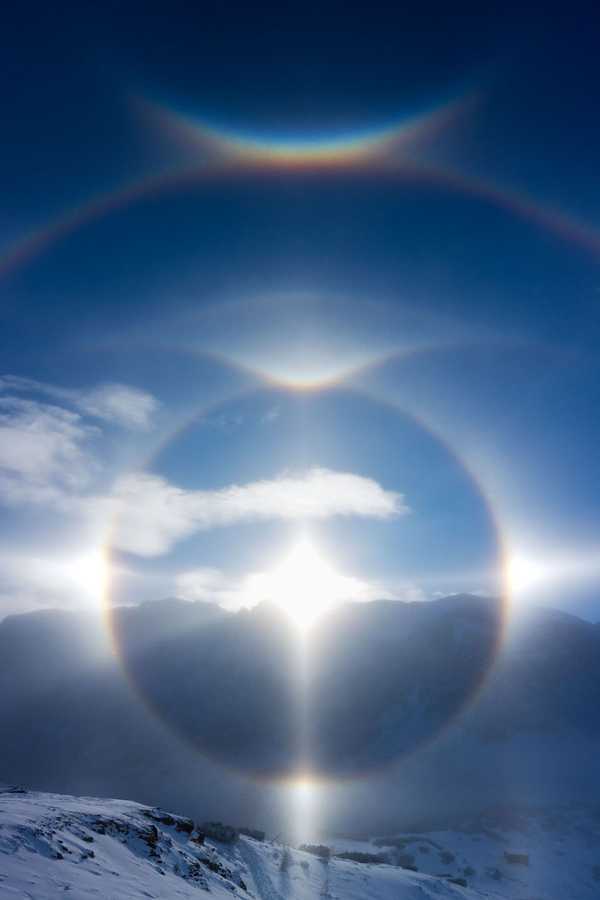
Higher Order Aberrations; Image by Donstruck, CC BY-SA 4.0, via Wikimedia Commons
But in between, many eye conditions can cause varying amount of halos and starbursts. Bad dry eye can also cause starbursts. Halos and starbursts can frequently be caused by cataracts or mentioned as a complication or side effect of refractive surgery.
After Lasik
Lasik is a very safe procedure. Lasik also has a very high satisfaction rate. However, lasik does have some short term effects while the eyes are healing that are important to know about. Halos around lights are one of those side effects. Fortunately, advancements in laser technology have dramatically improved this side effect.
For near-sighted patients, lasik works to correct vision by reshaping the cornea. Specifically, the center part of the cornea in which most vision passes is made more flat compared to the periphery of the cornea. The periphery of the cornea remains steeper compared to the center part of the cornea. When light enters the center part of the cornea, the light hits the retina at a different spot then when it enters the periphery. This causes spherical aberration; causing the halos around lights. Higher prescriptions will cause a greater change in the cornea and will lead to more halos in the beginning.
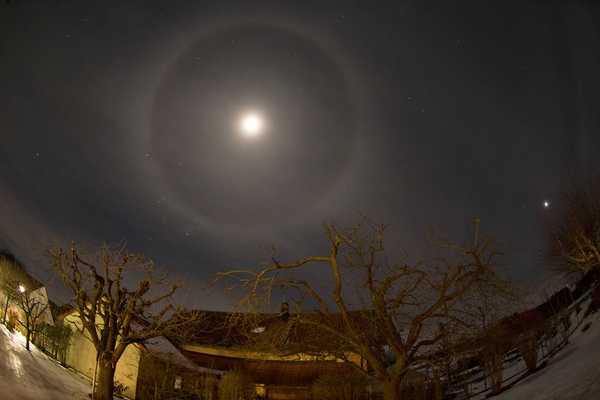
Halos aren’t unique to lasik. Soft contact lenses work the same way. Contact lenses have a correction within the center of the contact lens similar to how lasik works. However, most people do not remember the halos with contact lenses since over time the brain adjusts or neuroadapts to these halos until they just don’t really see them. The same thing happens with lasik.
Laser technology has changed the way halos are created after lasik. First, laser technology blends the center part of the cornea with the periphery eliminating any sharp cut-offs that cause defined halos. Second, through something called “wavefront optimized” treatments, the laser predicts how much spherical aberration is going to be generated and applies a correction to try to prevent it. Because of this, most people don’t notice or aren’t bothered by halos anymore after lasik.
While it is much less uncommon to have significant symptoms of halos or starbursts with modern lasik, those who get mini-monovision will still have some halos. Mini-monovision intentionally creates one eye better for distance and one better for up close. The eye focused up close will be blurry for the distance. This eye will cause some halos and glare in the short term after the procedure.
Before And After Cataract Surgery
Cataracts can cause starbursts. Fortunately these starbursts can be treated with cataract surery to remove the cataract.
But some degree of halos and starbursts are also a side effect of some multifocal or lifestyle lenses used in cataract surgery or refractive lens exchange. These halos are a byproduct of the unique technology that allows for glasses independence. Fortunately, as with most halos and starbursts, visual neuroadaptation reduces the appearance over time.
And same as with lasik, individuals having mini-monovision after cataract surgery will also note some additional halos and glare around lights.
Summary
Halos and starbursts are formed from abnormal or atypical focusing of light called higher order aberrations. These can be normal but in many cases form due to medical or surgical conditions of the eye.
Related Articles
Also check out EyeMountain.com for more great eye articles
Please note: The general information provided on the Website is for informational purposes only and is not professional medical advice, diagnosis, treatment, or care, nor is it intended to be a substitute therefore. See the Disclaimer and Terms of Use for more information
